Review: Dekmantel 2018
A varied feast of international delights.
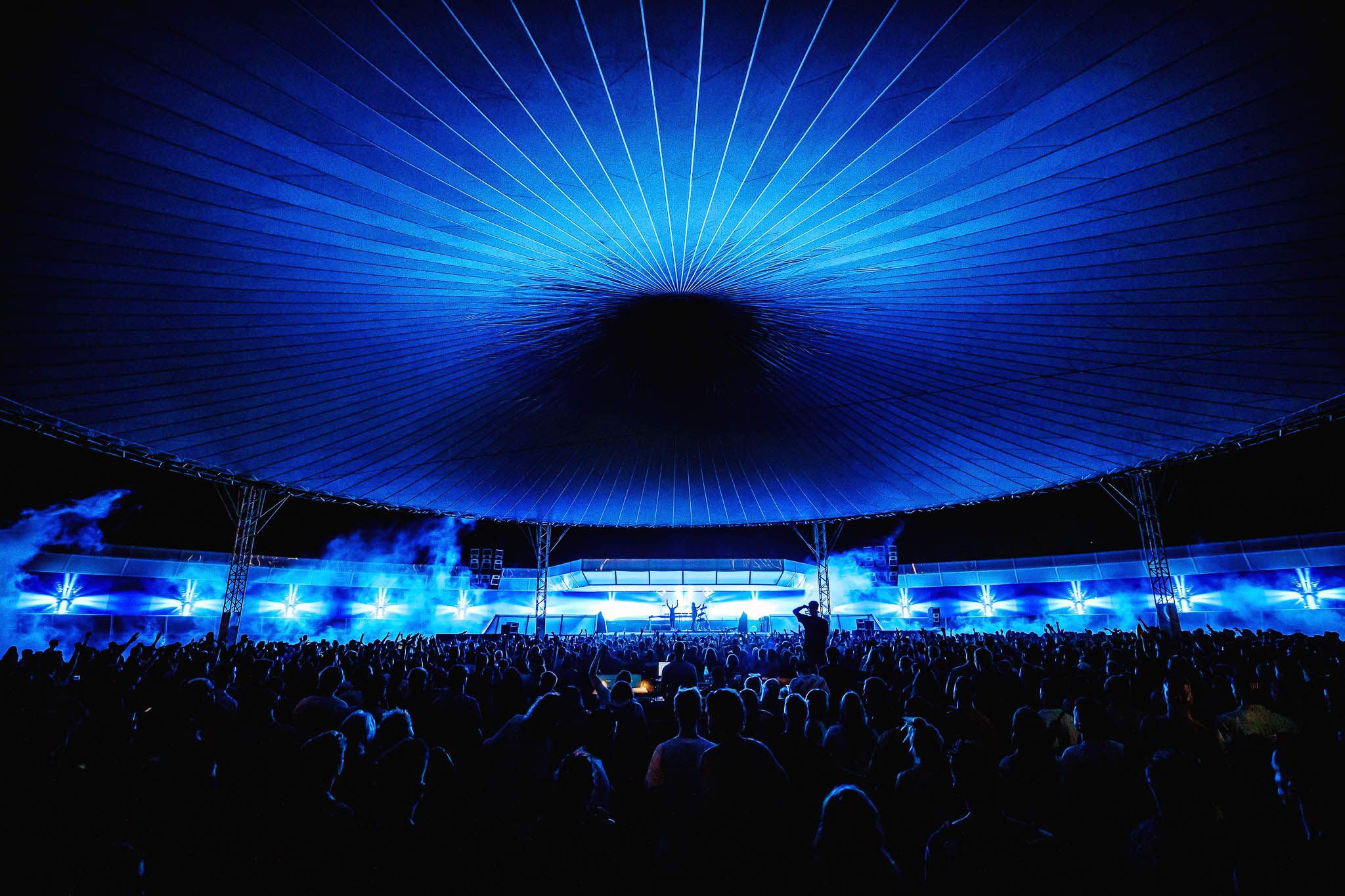
The Dutch aren’t known for tapas. At stations, and fast food joints, however, you can order small food portions from automatic dispenser machines; croquets, meatballs, sweets, and more. It’s a more northern incarnation of the Spanish delicacy and one that’s more deep-fried, with less of the Spanish flair. Dekmantel Festival, taking place in Amsterdam, spreading across five-days during the European summer heatwave, feels a bit like an international tapas in which one feasts from the varied global programming, sampling differing styles, and dancing to the varied tropical beats all under a glowing sun. It is essentially separated into two parts, the first part of the two taking place in the city, focussing on more experimental acts in more glamorous, high-brow settings, followed by the party frolicking party-lifestyle acts in the city’s woods from Friday onwards.
Legendary krautrock pioneers Tangerine Dream—albeit now with none of the founding members—kicked off proceedings on Wednesday. This was followed by a series of concerts on Thursday in the Muziekgebouw, perched alongside the river, where throughout the evening the sun gradually sets, casting its rays through the concert hall’s giant, glass facade. Yasuaki Shimizu played earlier on that evening. The criminally under-attended show saw the the Japanese avant-garde sax player mix between freestyle and ambient sounds, while creating loops, atmospheric distortions and vocal stabs. Having recently come to Western acclaim through the reissue of his 1982 LP Kakashi, it was fitting that the set ended with “Suiren,” the track that’s been in heavy rotation by many worldly-jazz type DJs and collectors. Thursday also saw the nuanced, slightly uncomforting yet fantastic performance by Pan Daijing. It’s not often an artist gives you instructions and a dissection of the proceeding performance beforehand, yet in her oddly, hypnotic world, in hindsight, such introductions felt necessary; like asking passengers to fasten their safety belt before settling into a rollercoaster ride. It’s an overwhelming trip that pulls you in and leaves you feeling sore and fragile afterwards.
Actress, like Dilla, has an approach to music that focuses on sound snippets, as opposed to full cut joints—like an exotic tapas of varied sounds. His live A/V show in the Muziekgebouw exemplified this, as the British experimental musician switched between piano ambience and rough techno joints. Combined together, his rough and ready sounds don’t combine to make a balanced meal of sounds, but individually they are sonically divine and great to experience.
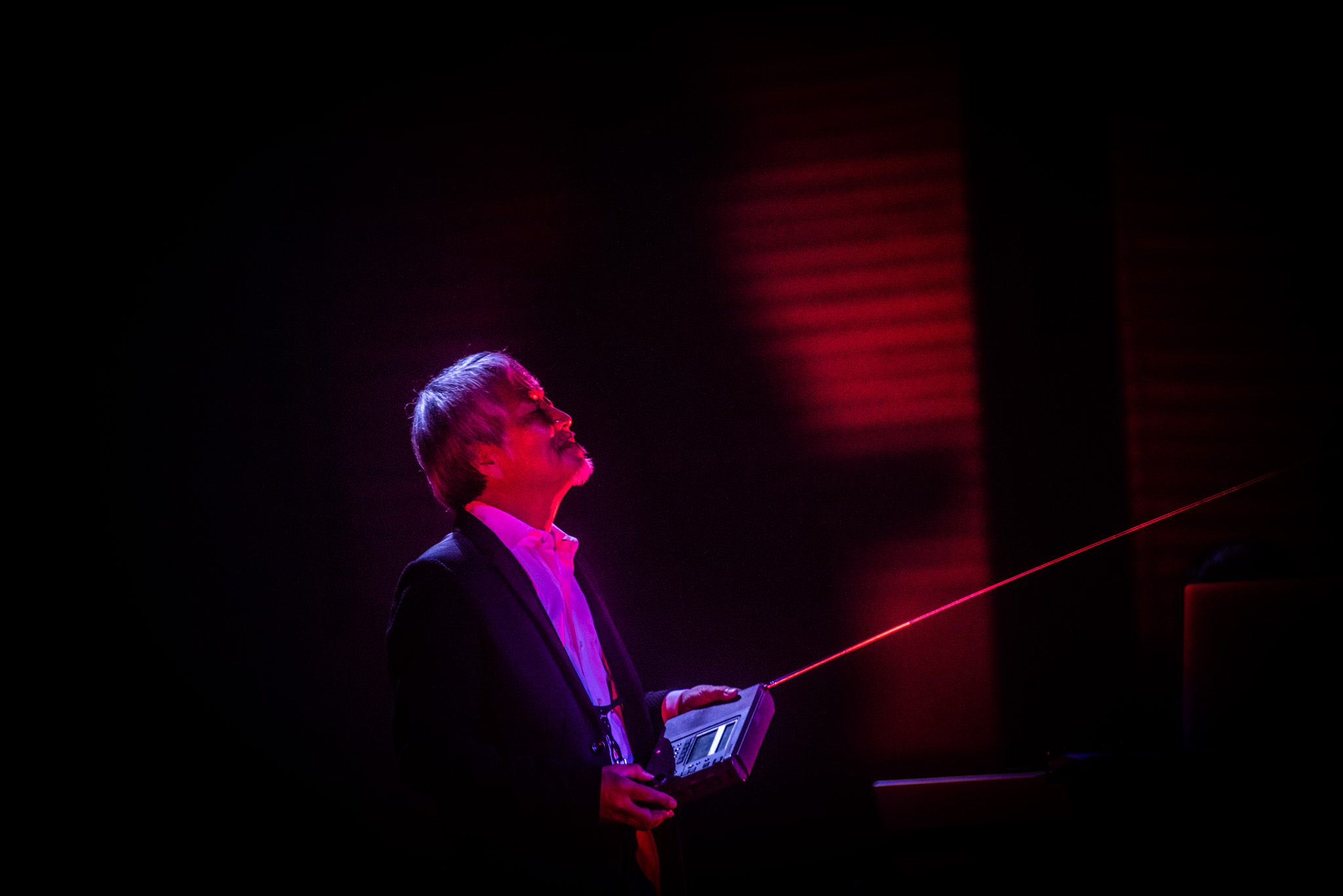
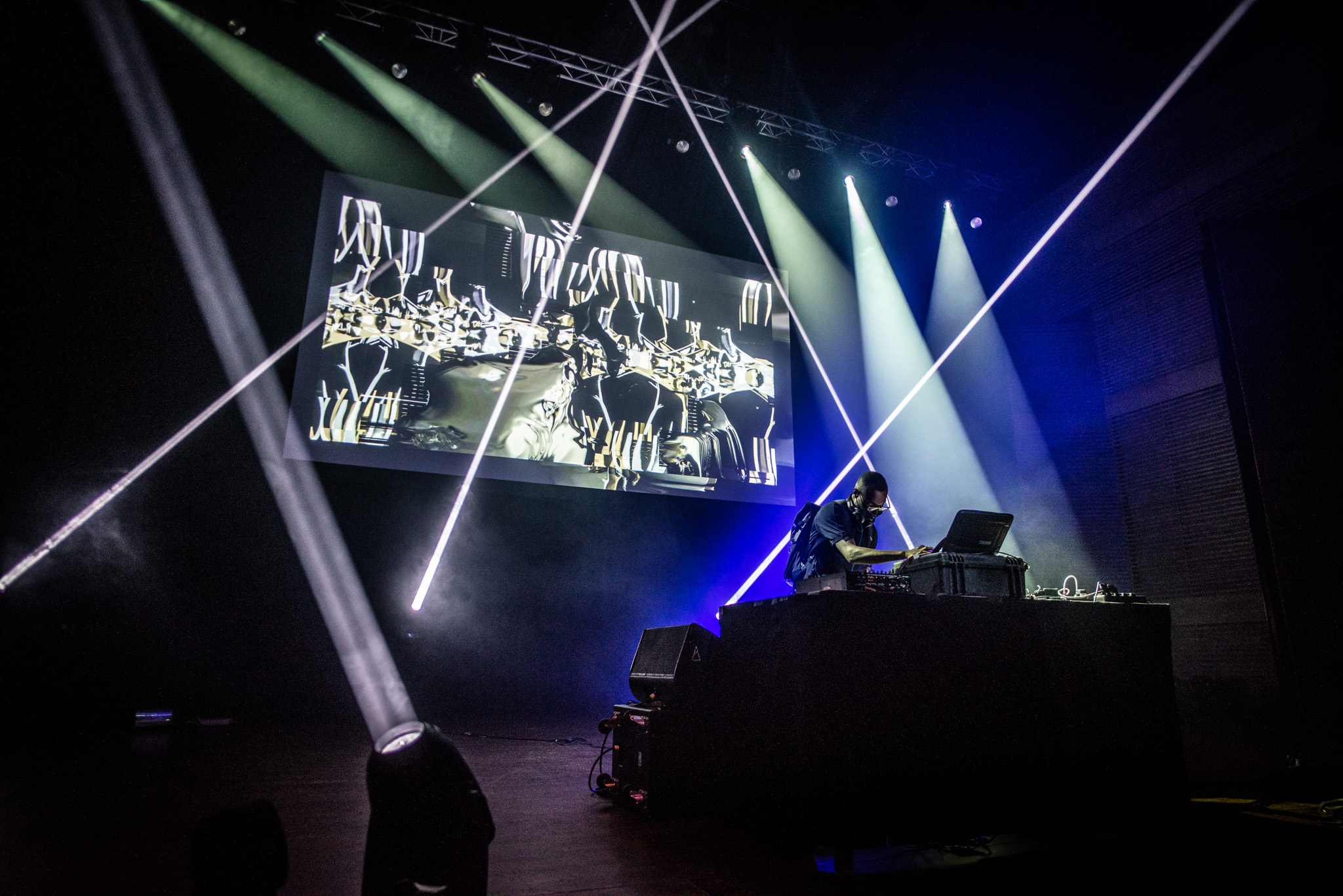
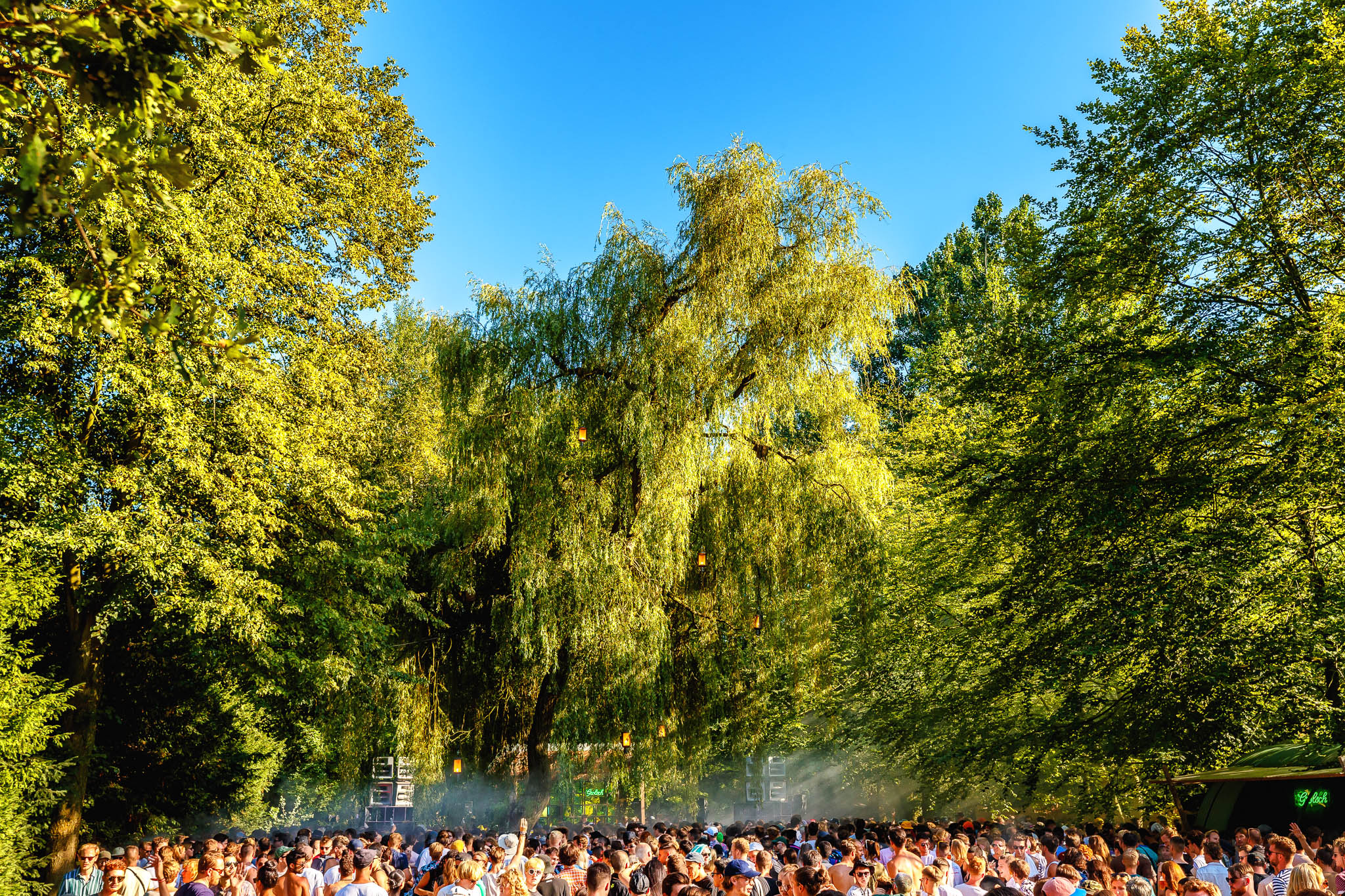
Moving on from the experimental and into the woods, the second half of Dekmantel Festival has a much different feel. Taking place in the Amsterdam Bos, a good 10k from the city centre, journeying to Dekmantel during a heatwave is rather laborious, but the forest setting more than makes up for the extended journey. The attendees for a start are differently dressed, taking on board the rave-fashion cues that are currently in de-rigour, with matching tropical themed, button-up short-sleeved shirts, long white socks, and over-the-shoulder fanny backs. The latter definitely being a cross-gender, contemporary accessory—along with the customary vape, and brand name sports visor.
Between Friday and Sunday, the woodland area is transformed into a metaphorical, dance-music war zone, as sound systems battle each other amongst a sea of light explosions, and wafting smoke, as crowds mingle their way in between the minute Boiler Room stage, through to the Greenhouse, Selectors stage, Main, and UFO stages. Needless to say, the heat played an integral part in making music choices, as one opted more for laid-back choices which offered shade during the day’s hotter moments.
On Friday, one of the more apt and standout discoveries was Dutch DJ Upsammy who graced the Red Light Radio stage during the afternoon—playing what can only be described as post-Autonomic, deconstructed drum & bass, albeit played at a slower tempo. With random rhythms and disjointed beat patterns, the records were impeccably mixed, with only an older track by Amon Tobin coming to my attention [something from “Foley Room” era, but I can’t seem to recall which one it exactly was.] Another noteworthy mention for Friday must go to Lena Willikens on the Selectors stage, who started and continued with driving EBM, and weird-techno cuts—pulling in an obscenely large crowd. On the Main Stage, Orbital closed the day’s events. I last saw Orbital at Glastonbury in 2004, and it seems as if the British duo haven’t aged at all. With their unique “eye-wear,” and monstrous analogue rig, the duo held back no punches as they worked their way through the hits, just like they did for me 14 years ago.
On Saturday, Dâm Funk proved to be an enlightened booking. While at the beginning, the Stones Throw titan seemed a bit lost playing older house and techno cuts, he smoothed his way into more sultry, afternoon hip-hop and R&B. Errorsmith tore the roof of the UFOII stage—a new addition to the festival to house more underground, left-of-centre techno artists—with his oddball, deadpan, and freakish sounds. The German sound wizard may take his production aesthetics with the greatest of seriousness, but in the live arena he really shines, toying with the audience, and then devastating them at will—when he decides to bring the crushing beats back to the foray. Other Saturday mentions must also go to Gilb’r and Max Abysmal for creating a cathartic and fruitful mix on the Selectors stage [a big shoutout to Abysmal for dropping “Warhead” by Krust], playing warm-up to Mr.Scruff who flaunted his deep collection, delving into forayed selections of abstract African disco, soul, and house cuts. Four Tet graced the Main Stage, followed by a series of afterparties taking place at Radion and Shelter featuring Tom Trago, Matrixxman, and more, but after a long day and journey into the woods, I decided to save myself for the final day.
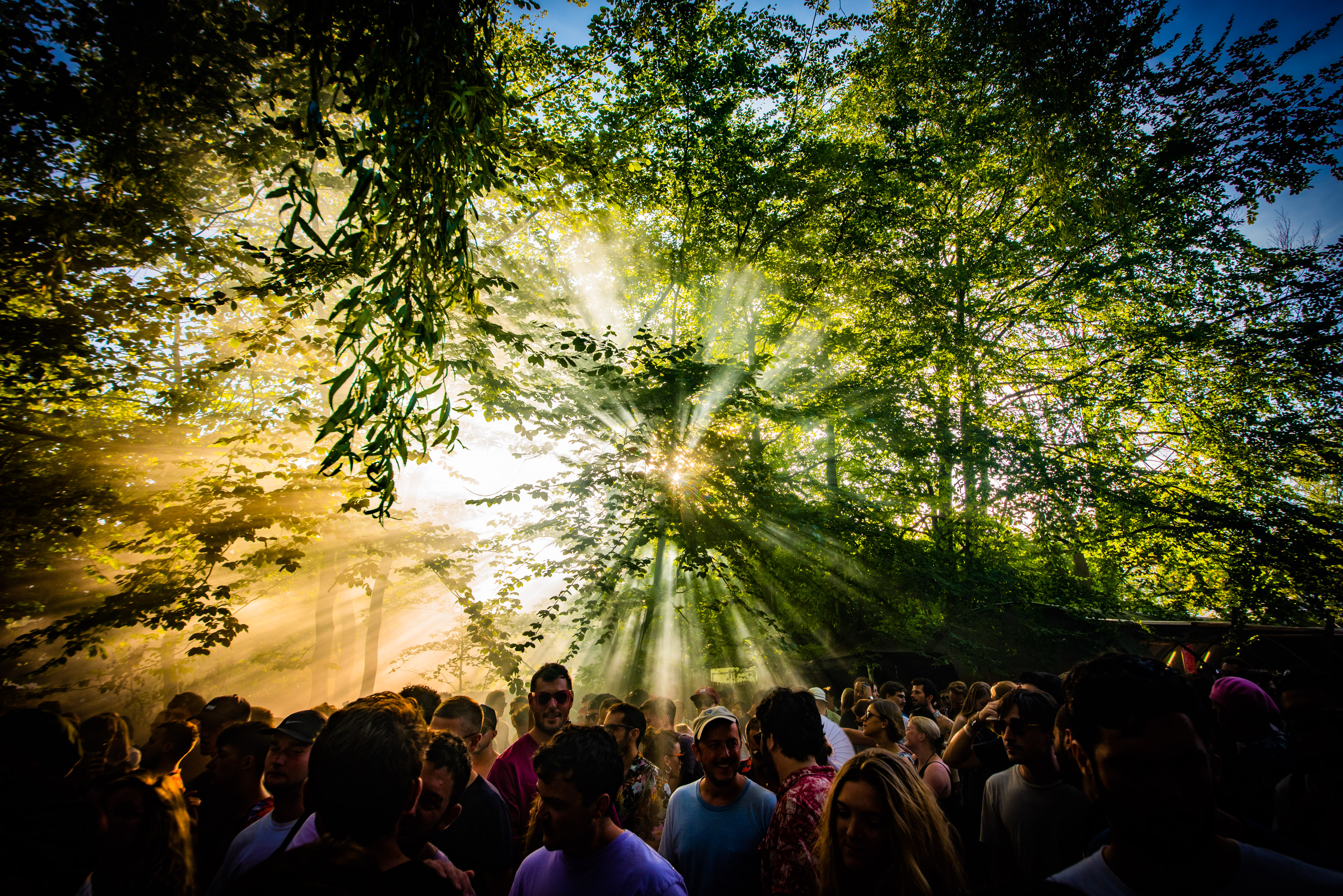
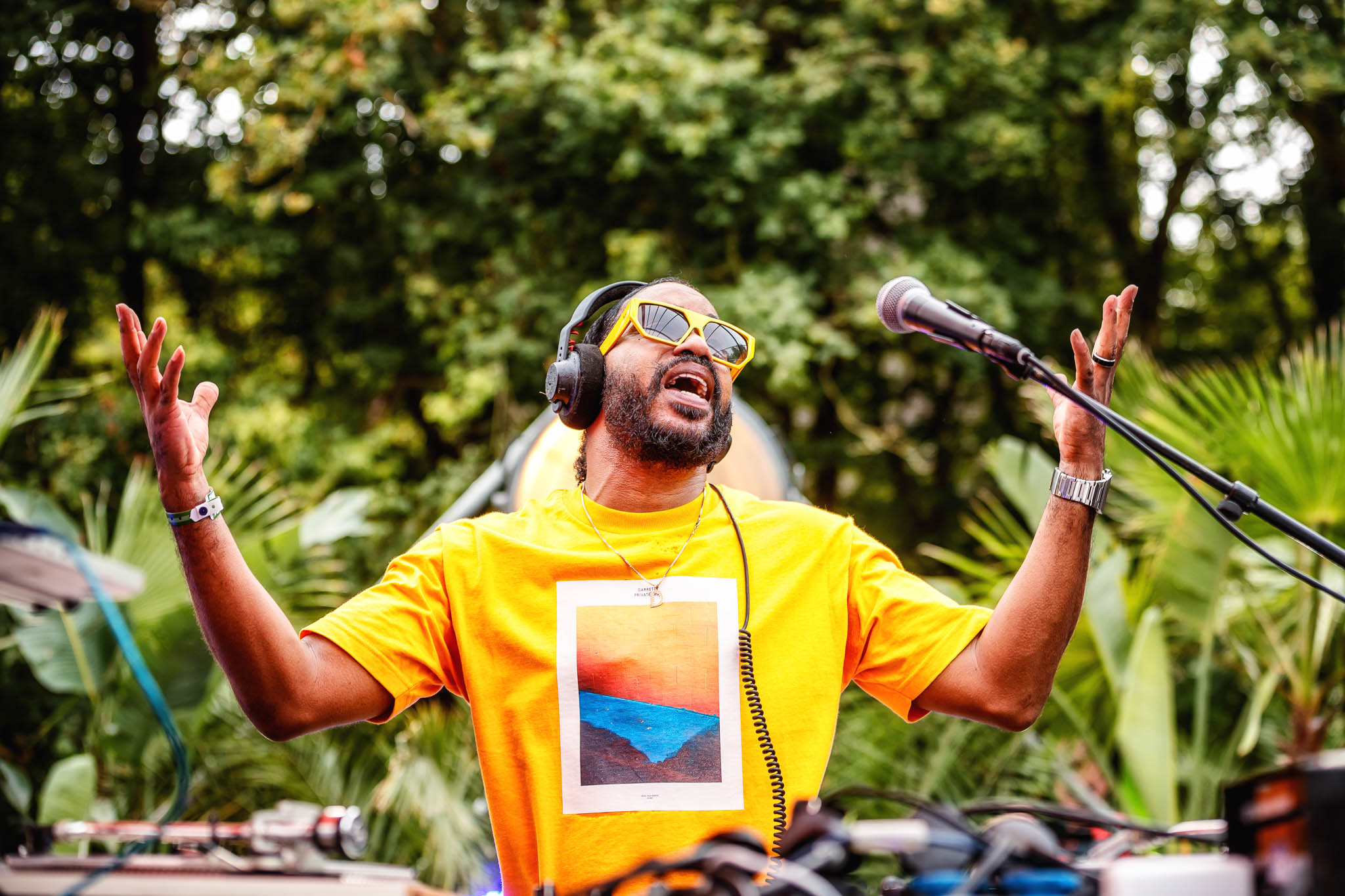
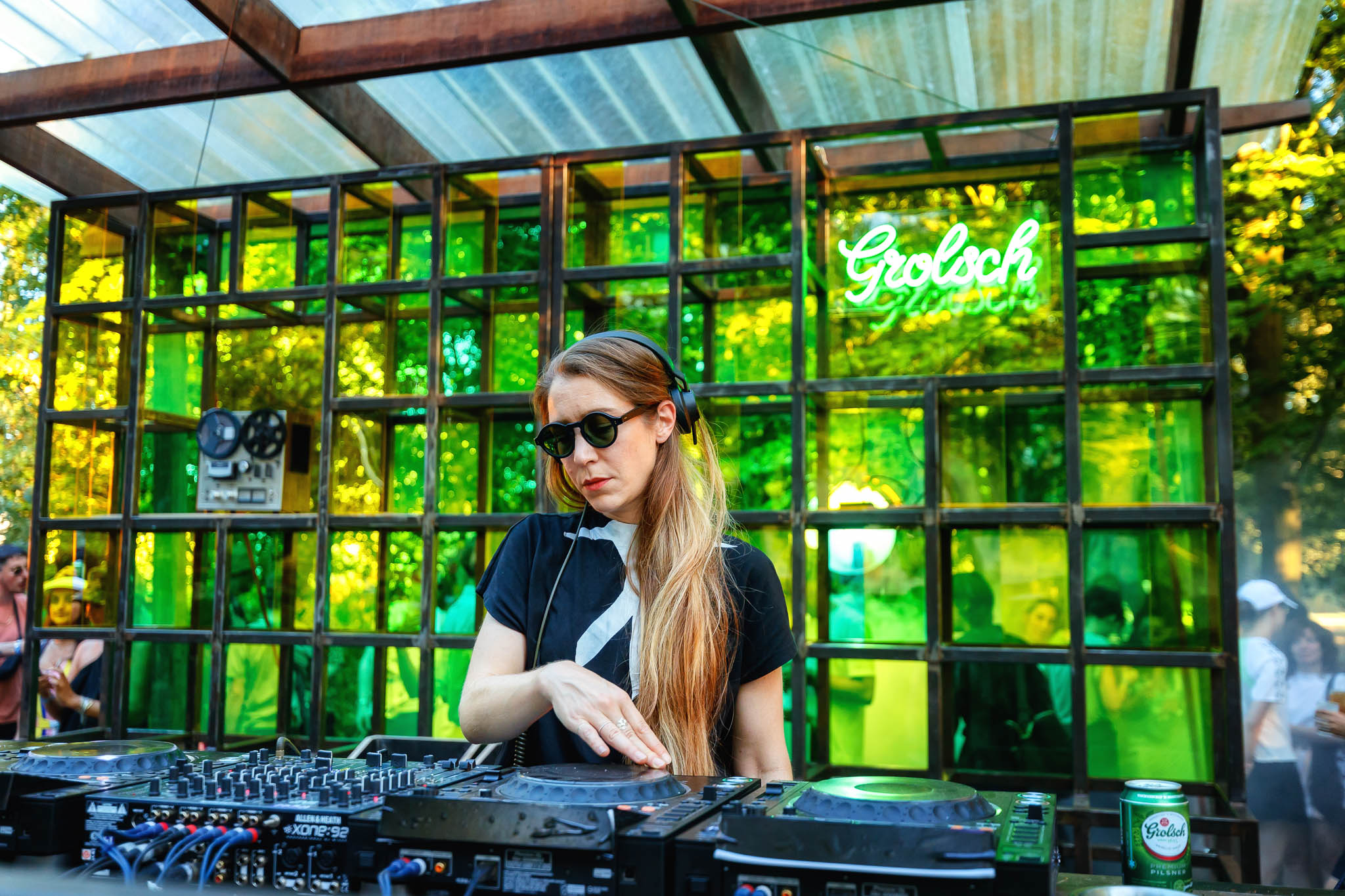
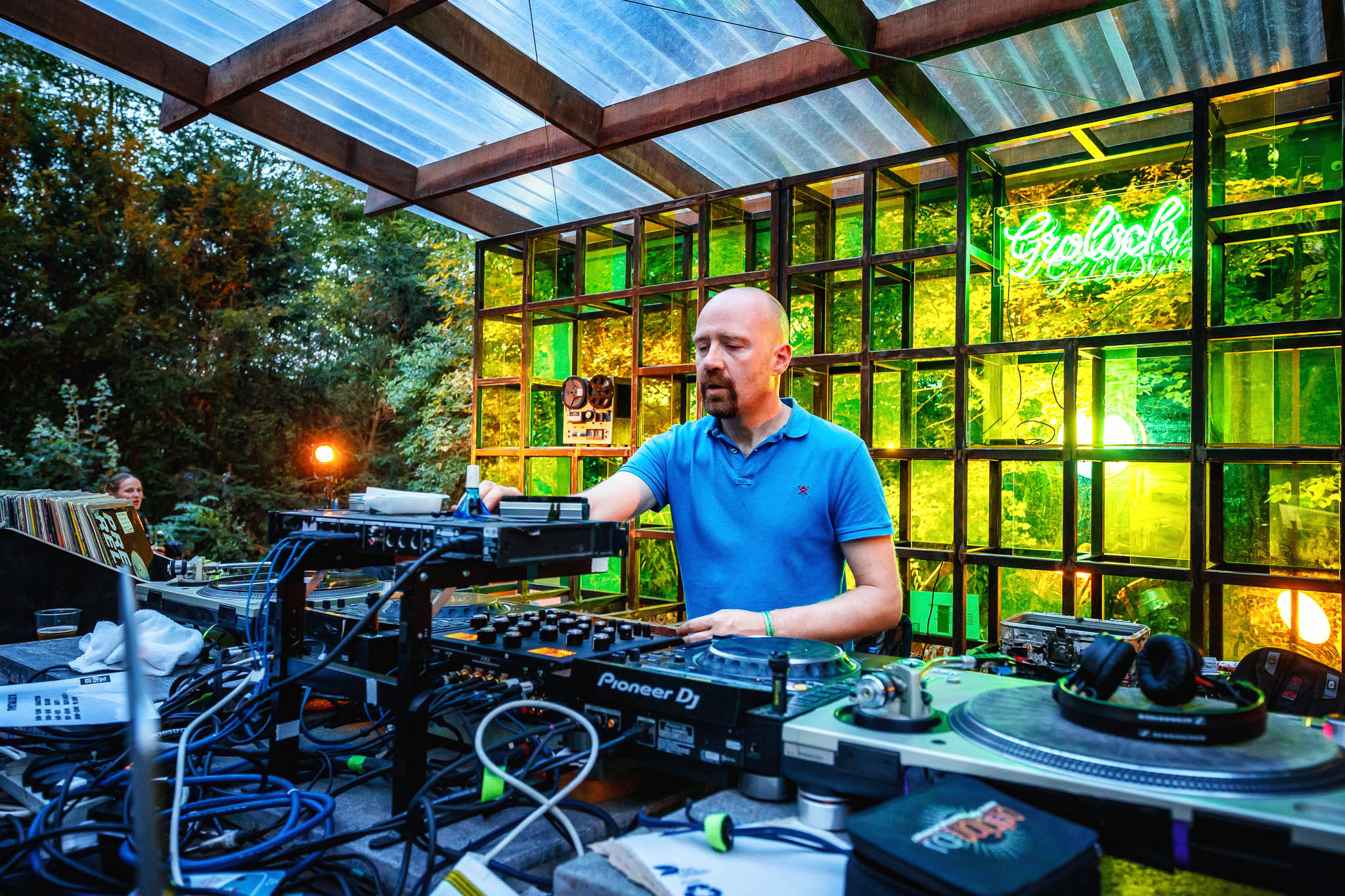
Sunday saw great performances by Kutmah, whose hip-hop, jungle, and Turkish-psych cues provided the ample afternoon soundtrack. Followed by The Bug and Miss Red, their titanic, frequency-overloaded performance showcased why the dub-duo are prime festival fodder. With the bass frequencies rattling the roof of the Greenhouse, their set included staples from both of their respective catalogues including “Poison Dart,” and more. Mark Knekelhuis with Merel on the Red Light Radio stage played an intriguing set of digi-cumbia, and wavey house, all to which seemingly fits within the sonic palette that befits Knekelhuis’ label’s output. Shazam is no use when the level of selection is this deep, and out there. Goldie and DJ Randall proved excellent entertainment playing off each other in the Greenhouse, throwing down classic drum & bass cuts from the past 25 years. All the greats from Omni Trio, High Contrast, and more got their turn in their 25-year drum & bass retrospective, with personal favourite “Tuning” by D.Kay and DJ Lee getting a really good spin.
On the Red Light Radio stage, Powder showcased herself as being a secret-selector with oriental, avant-disco, and smooth percussive chanting discoveries. One to keep an eye out for sure. Closing the festival out, Helena Hauff delivered a set of blistering energy full of techno-tempoed wave, all delivered in her Hauff-ist aesthetic. A blistering set of out-there, mind-blowing electro, providing a welcome breather to the more generic techno that one might hear being played by a Main Stage act. Dekmantel Soundsystem and Young Marco took the festival on into the night as the festival’s afterparties as Dekmantel waltzed onto into the early hours of its fifth day.
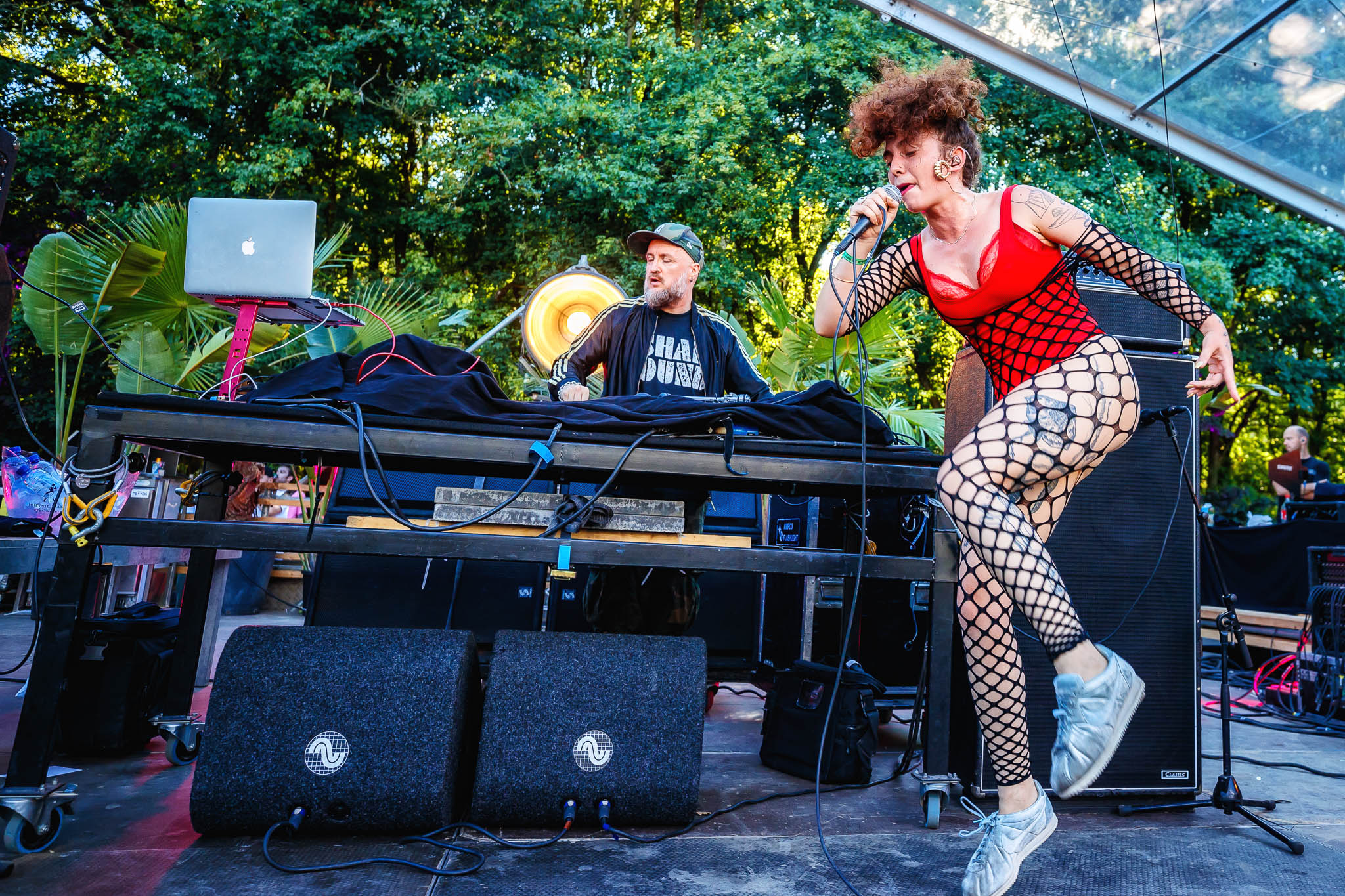
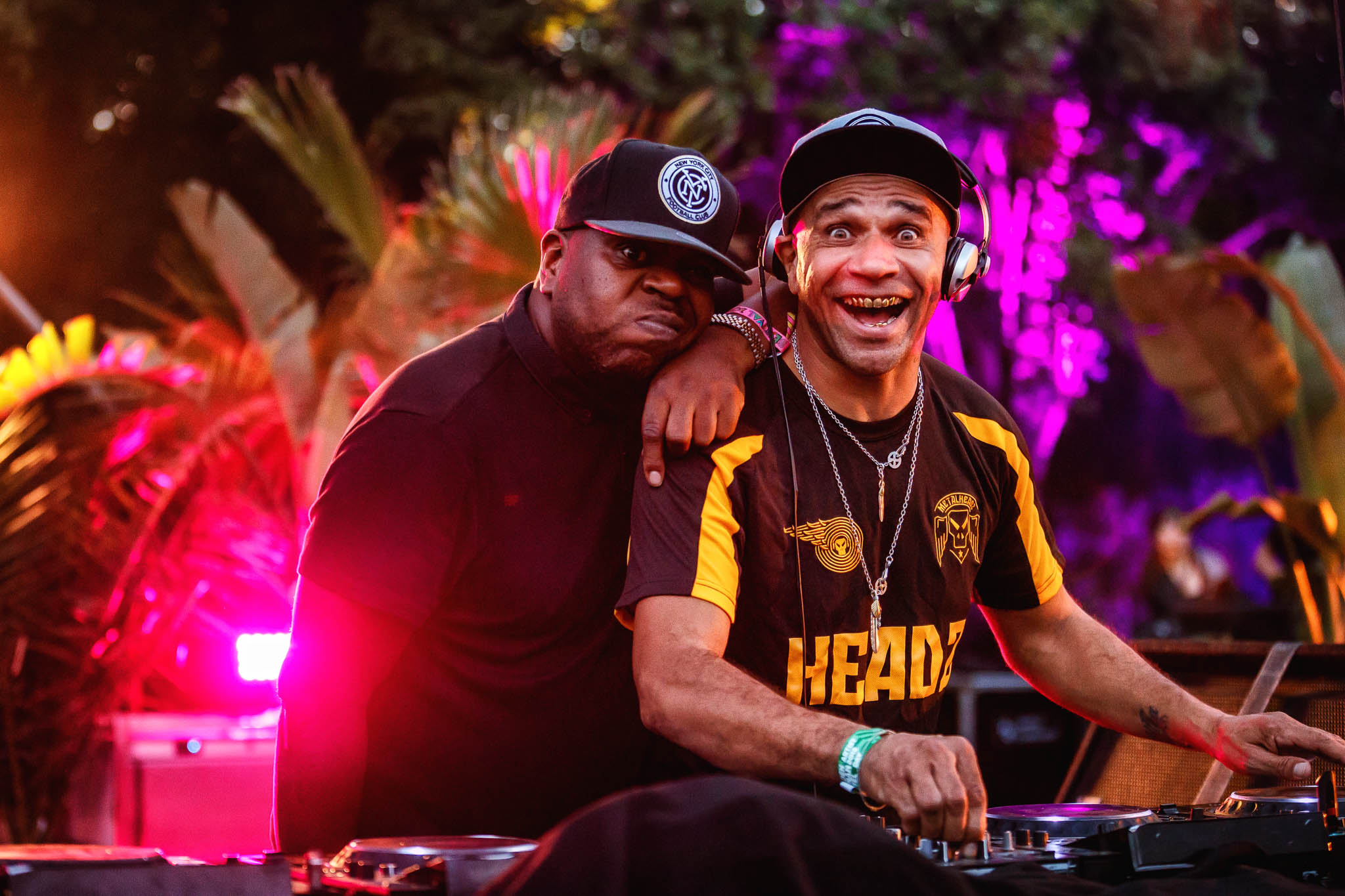
With such a large line-up across seven stages, its impossible to catch everything; with so many clashes it becomes painful to have to compromise between one thing and the other. This is one of the problems of big festivals nowadays—having too much of a good thing. It also encourages sampling bits of performances, as you drift between one stage and another—not getting the full experience from an entire performance. That in itself is one of Dekmantel’s problems, and one that it perhaps will never be able to overcome. The distinction between the opening concerts, and the woodland festival is also one of noteworthiness. Although it is a blessing that Dekmantel can book such exciting and rare talents to play in the city (there aren’t many promotes who can put Terry Riley, Actress, and the such on the same billing), a festival with greater cohesion would be more befitting—and having more experimental and ambient acts in the Amsterdam Bos would make a more welcome respite during a daytime of house and funk revelry. Dekmantel’s success has been built upon a great adeptness to programming and open-mindedness to music, which has provided them with a solid foundation to build upon for years to come—no matter what new directions they decide to take.

